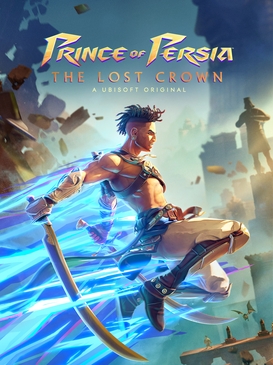Gaming enthusiasts, brace yourselves! After over a decade of anticipation, the iconic Prince of Persia series is set to make a triumphant return with the highly awaited release of “Prince of Persia: The Lost Crown.” Ubisoft, the renowned game developer, has been diligently crafting this new adventure, and recently, Nerdist had the exclusive opportunity to delve into the game’s intricacies with Joseph-Antoine Clavet, the Cinematic Lead behind this much-anticipated project.
Embarking on a Fresh Chapter
Choosing the right entry point into this fresh chapter of the Prince of Persia saga was no simple task. According to Clavet, the development team aimed to preserve the essence of what makes the game exceptional: exploration, puzzle-solving, and a dynamic acrobatic combat system. Director Mounir Radi pushed them to push the boundaries, ensuring these elements were not merely retained but amplified to new heights.
Clavet revealed that “The Lost Crown” skillfully remixes the best elements from its predecessors, capturing the essence of the original Jordan Mechner’s Prince of Persia while incorporating the exploration, puzzle-solving, and combat mechanics that Ubisoft introduced. He emphasized the desire to create a game that stands on its own, rooted in Persian folklore, without being tethered to previous narratives.
Persian Mythology Unveiled
One of the distinctive features of “The Lost Crown” is its profound connection to Persian folklore and mythology. Clavet envisions the game as a gateway to the rich tapestry of Persian myths, shedding light on lesser-known stories. While clarifying that the game is not a historical portrayal, he highlighted how gods, character names, and landmarks draw inspiration from Persian mythology. Clavet encourages players to explore these elements further, fostering a curiosity that extends beyond the game.
Clavet drew attention to the effort to elevate Zoroastrian gods, often overshadowed in cultural consciousness, and establish connections between myths from various human cultures. By blending elements from different mythologies, the game aims to create a mythical representation that pays homage to the diverse threads of human storytelling.
Sneak Peek into Mythical Creatures
A veil of mystery surrounds the mythical creatures players will encounter in “The Lost Crown.” Clavet tantalizingly refrains from divulging too much, aiming to preserve the sense of discovery. However, he did provide a glimpse into the game’s setting, including a giant boar named Erlik residing in the depths of Mount Qaf, inspired by a mythological underworld deity. Mount Qaf, a central location in the game, originates from Persian legend as the farthest point of the Earth.
Unravelling Easter Eggs
Easter eggs have long been a beloved aspect of gaming, and “The Lost Crown” promises to be no exception. Clavet, cautious not to spoil the joy of discovery, hinted at the presence of Easter eggs that pay homage to the nostalgia of Prince of Persia enthusiasts. While remaining cryptic about specific details, he teased potential connections to the Mechner games and other Ubisoft properties, urging players to pay attention to details like potions and sounds for hidden surprises.
Meet Sargon, the Unconventional Hero
The narrative focal point of “The Lost Crown” is the protagonist, Sargon, a character exuding effortless coolness. Clavet shared insights into Sargon’s design philosophy, emphasizing the decision to forgo armor, symbolizing his untouchable prowess. Sargon’s fighting style, a blend of Wushu, Capoeira, Taekwondo, and breakdance, reflects a “powerful small dude scared of nothing.” The Immortals, a family of characters aiding Sargon, add depth to the narrative but also pose challenges as they become integral to the story.
Harmony of Story and Gameplay
While the story is a crucial element, Clavet asserted that gameplay takes precedence. Balancing the cinematic feel with engaging gameplay experiences is a delicate task. Clavet acknowledged that gameplay is the primary draw for players, but a well-crafted narrative adds weight to the player-character relationship. The narrative structure serves specific purposes, from closing character arcs to foreshadowing future events, creating a seamless blend of story and gameplay.
Art of Storytelling in Games
Discussing the unique aspect of storytelling in games, Clavet highlighted the interactive nature that distinguishes gaming from other mediums. Unlike passive experiences such as movies, games compel players to question, “Why am I doing this?” This interactive relationship between character and player enhances empathy and engagement, making the storytelling in games a distinct and fascinating endeavor.
Endearing Qualities for Fans
In closing, Clavet provided insights into what both old and new fans can expect from “The Lost Crown.” He identified two eras in the Prince of Persia brand and emphasized that the game’s design aims to bridge these eras. For those familiar with Jordan Mechner’s original, the sense of adventure, trepidation at every turn, and the feeling of being stuck in unknown territory will resurface. Meanwhile, fans of Ubisoft’s iteration can anticipate exploration, a sense of grandeur rooted in Persian culture, intricate puzzle-solving that challenges intellect, and a fast-paced, acrobatic combat system.
In essence, “The Lost Crown” promises to be an expansive experience that transcends the confines of a castle, offering players a journey through interconnected biomes and a deeper exploration of Persian folklore. Clavet succinctly encapsulated the vision for the game, stating, “We wanted to do something that felt bigger.”
As the gaming community eagerly awaits the release of “Prince of Persia: The Lost Crown,” the prospect of a revitalized and enriched Prince of Persia experience has fans counting the days until they can embark on this epic adventure.


